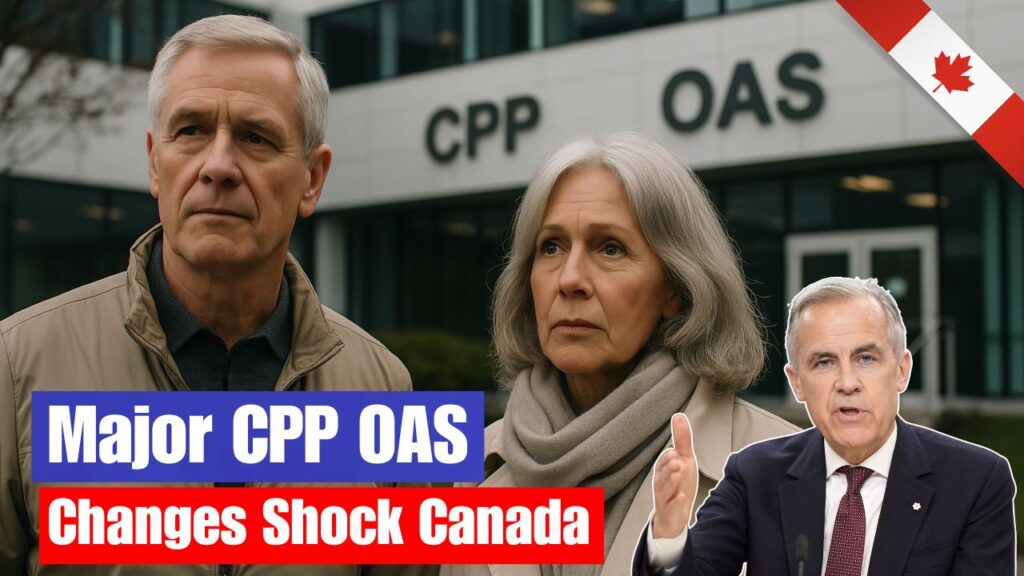Canada Retirement Age – Canada’s retirement landscape is undergoing one of its most significant shifts in years as new CPP and OAS changes are announced by the federal government. These updates could influence how millions of Canadians plan their long-term financial security, especially as discussions grow around potentially redefining the national retirement age. With rising living costs and updated benefit calculations, retirees and soon-to-retire individuals are closely watching what these adjustments mean for monthly payments, eligibility rules, and long-term stability. This article breaks down the updates in a clear, human-friendly way to help Canadians understand what’s changing.

New CPP Adjustment Details for Canadian Seniors
The latest CPP adjustment introduces a revised contribution and payment structure that directly impacts Canadian seniors preparing for retirement. This variation focuses on increased sustainability, higher long-term payouts, and enhanced support for individuals who continue working past age 65. With shifting demographics and a rapidly aging population, the federal administration is implementing these changes to ensure CPP remains stable for decades. For seniors already receiving benefits, the adjustments may result in gradual increases, while future retirees might see updated age thresholds or contribution requirements. Understanding how these changes apply is essential for anyone planning their financial future in Canada.
Updated OAS Benefit Rules for Citizens Across Canada
The federal government has also introduced new OAS benefit rules that affect citizens across Canada, particularly those nearing 65. This update focuses on aligning OAS with the current economic climate, aiming to provide better financial stability for retirees facing rising expenses. One major highlight is the potential reconsideration of the retirement age and how future payments may adjust to inflation more frequently. As the government evaluates long-term sustainability, Canadians can expect clearer eligibility definitions, possible age adjustments, and refined clawback thresholds. These OAS updates aim to maintain equitable support for older adults nationwide.
| Program | Current Rule | Proposed Change |
|---|---|---|
| CPP Retirement Age | Standard at 65 | Possible shift toward 66–67 |
| OAS Eligibility | Begins at 65 | Review underway; potential adjustments |
| CPP Payment Increase | Annual indexation | Enhanced annual indexing for inflation |
| OAS Clawback Threshold | $90,997 income | Likely to increase to reflect cost of living |
| Late Retirement Bonus | Delayed CPP boosts by 8.4% yearly | Potential higher incentives for late retirement |
Retirement Age Discussions Affecting People Across the Canadian Provinces
With life expectancy rising and economic pressures mounting, discussions surrounding Canada’s retirement age are becoming increasingly important across the provinces. The federal government is considering long-term reforms to balance sustainability with fairness, ensuring benefits remain secure for decades. These debates involve whether the retirement age should shift closer to international standards and how such a change could impact workers, low-income Canadians, and those with physically demanding jobs. As policymakers analyze various models, the focus remains on protecting vulnerable groups while ensuring future generations can rely on CPP and OAS without reductions. Canadians are encouraged to stay informed as these discussions continue.
Federal Pension Sustainability Plans for the Canadian Economy
Ongoing pension sustainability plans highlight the federal government’s commitment to strengthening the Canadian economy while protecting retirees. These strategies involve reviewing contribution rates, adjusting benefit amounts, and ensuring the retirement system evolves with demographic trends. By modernizing pension frameworks, Canada aims to reduce financial strain on younger workers while stabilizing long-term payouts for aging citizens. The federal government emphasizes that sustainable pension planning is crucial for economic resilience and generational fairness. Understanding these plans helps Canadians align their financial planning with upcoming national reforms.
Frequently Asked Questions (FAQs)
 Australia Introduces $415 Rolling-Red Fine – AI Red-Light Cameras Now Catching Drivers Instantly
Australia Introduces $415 Rolling-Red Fine – AI Red-Light Cameras Now Catching Drivers Instantly
1. Are CPP and OAS retirement ages officially changing?
No official change has been confirmed, but the federal government is reviewing shifting the age upward.
2. Will current retirees lose any benefits due to these updates?
No reductions are expected; changes mainly affect future retirees or eligibility adjustments.
3. Are CPP payments expected to increase next year?
Yes, annual indexing and proposed enhancements may raise future payments.
4. Why is Canada reviewing the retirement age now?
Rising life expectancy and economic pressures are prompting the review for long-term sustainability.



